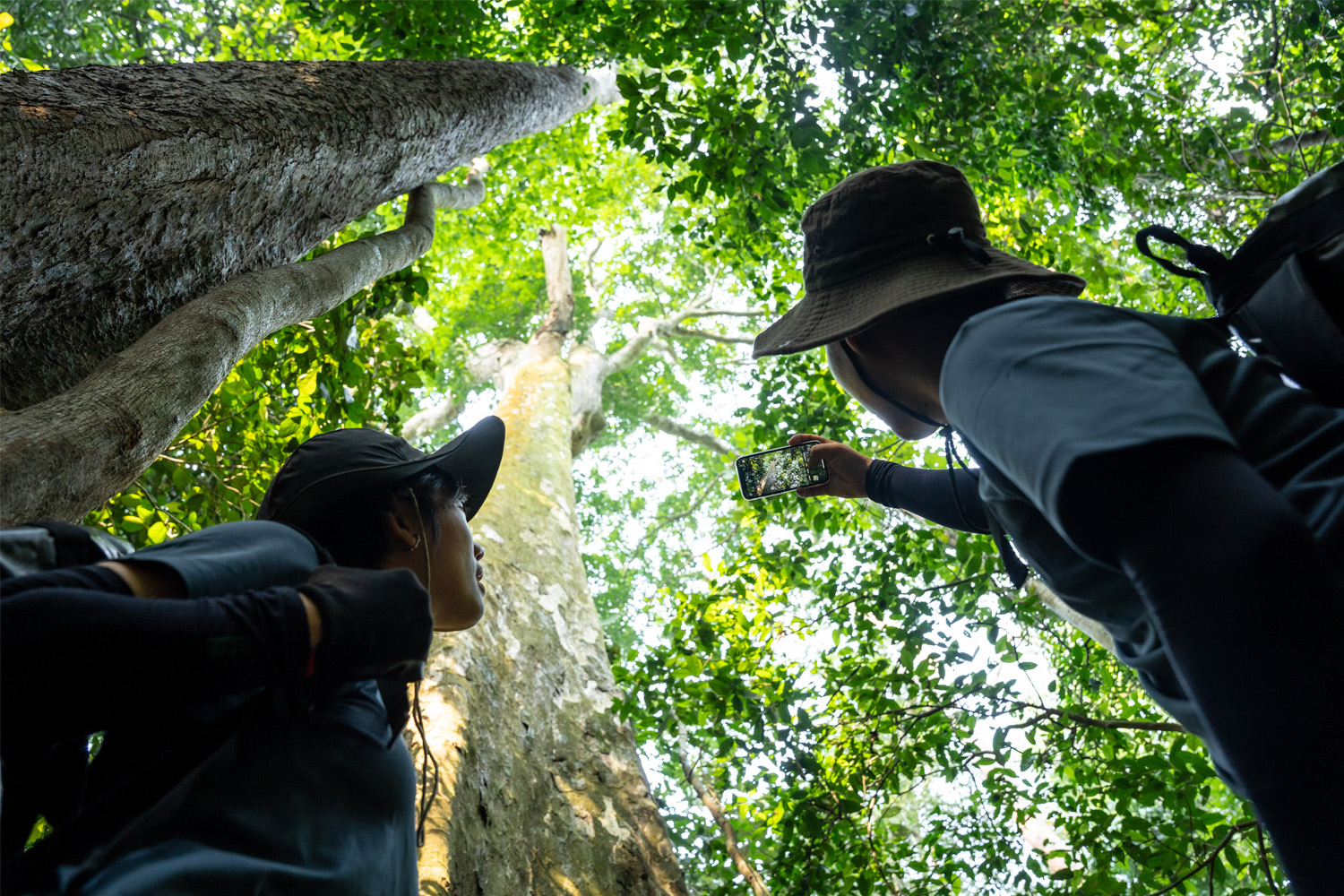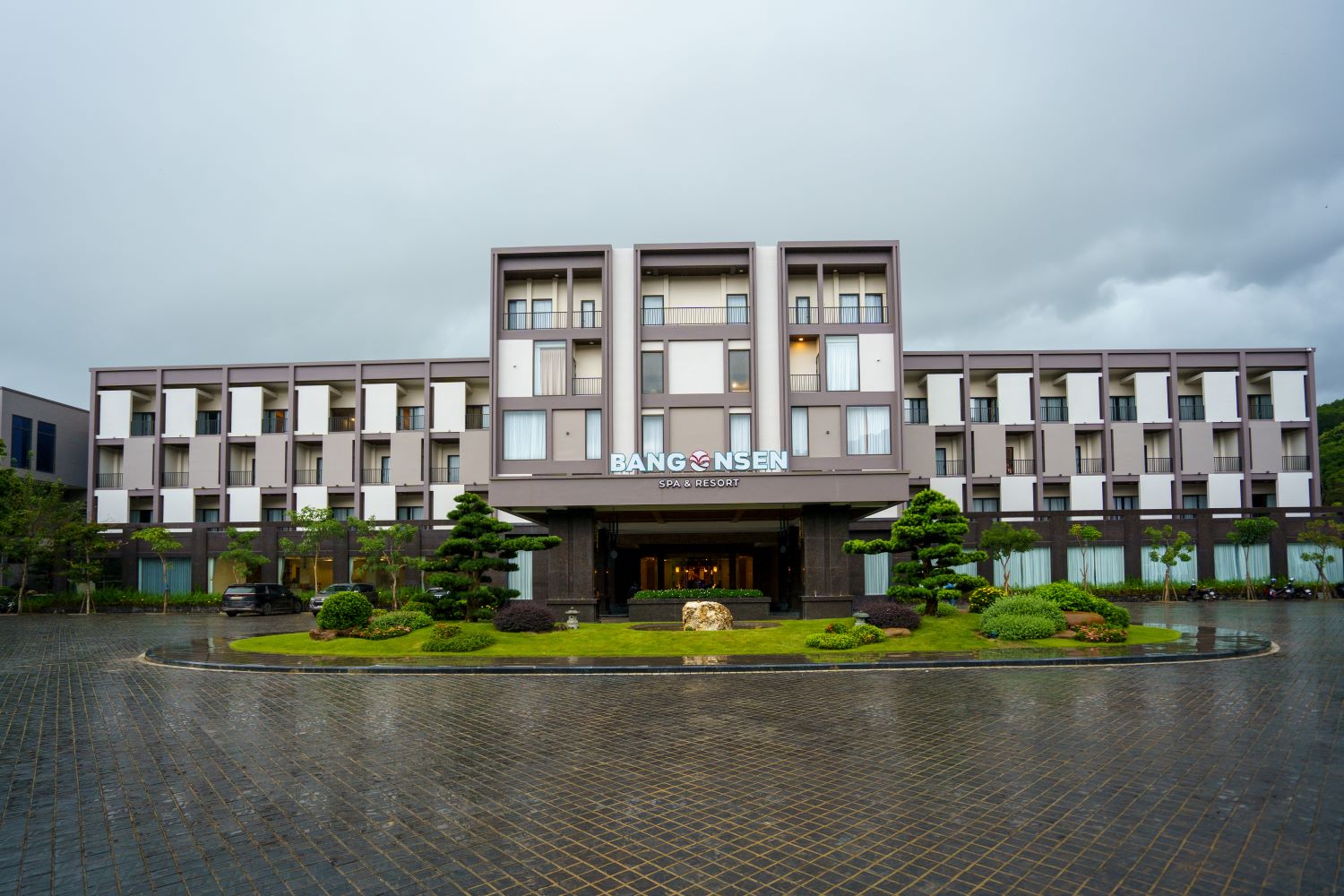Nestled within the lush landscapes of Quang Binh lies a magnificent cave gifted by nature – Phong Nha Cave. Formed through millions of years of geological activity, the cave boasts an incredibly diverse and abundant system of stalactites and stalagmites. Often referred to as the “First Wonder Cave” of Vietnam, Phong Nha Cave is a captivating destination that attracts both domestic and international tourists alike.
The discovery of Phong Nha Cave and the origin of its name
Phong Nha Cave was discovered by the Cham people in ancient times when the region was part of the Champa Kingdom. Inscriptions carved on the cave walls in the ancient Cham language, along with remnants of broken stone statues, indicate that the Cham people not only knew of the cave but also worshiped at the site.
According to historical records, Duong Van An was the first to document Phong Nha Cave in 1550. Later, the cave was included in the list of Cuu Dinh Dai Noi (Nine Dynastic Urns) of the Nguyen Dynasty in Hue. In 1824, Emperor Minh Mang conferred the title “Dieu Ung Chi Than” (Divine Spirit of Miraculous Response) upon the cave, and subsequent Nguyen emperors also bestowed it with the title “Than Hien Linh” (Divine Manifestation).
In the late 19th century, a French priest named Léopold Michel Cadière conducted an expedition to explore the cave, praising it as the “First Cave of Indochina.” In July 1924, British explorer Barton confirmed, after visiting Phong Nha Cave, that it could rival world-renowned caves such as Padirac Cave in France and Drach Caves in Spain for its breathtaking beauty.
There are various theories regarding the origin of the name Phong Nha. Some believe the name comes from the local dialect, meaning “wind passing through teeth.” This interpretation stems from the image of stalactites hanging at the cave’s entrance, resembling large teeth, with the wind constantly flowing through the gaps.
Others suggest that the name originates from Chinese characters: “Phong” (風) meaning wind, and “Nha” (牙) meaning tooth.
Additionally, according to Le Quy Don, the name Phong Nha derives from the name of an ancient mountainous village (now Phong Nha Town, Bo Trach District).
To this day, there is no consensus on the exact origin of the name Phong Nha. However, regardless of its etymology, Phong Nha Cave remains a stunning natural wonder and a source of immense pride for the Vietnamese people. Today, Phong Nha continues to be a must-visit destination, offering countless fascinating experiences to tourists from all over the world.
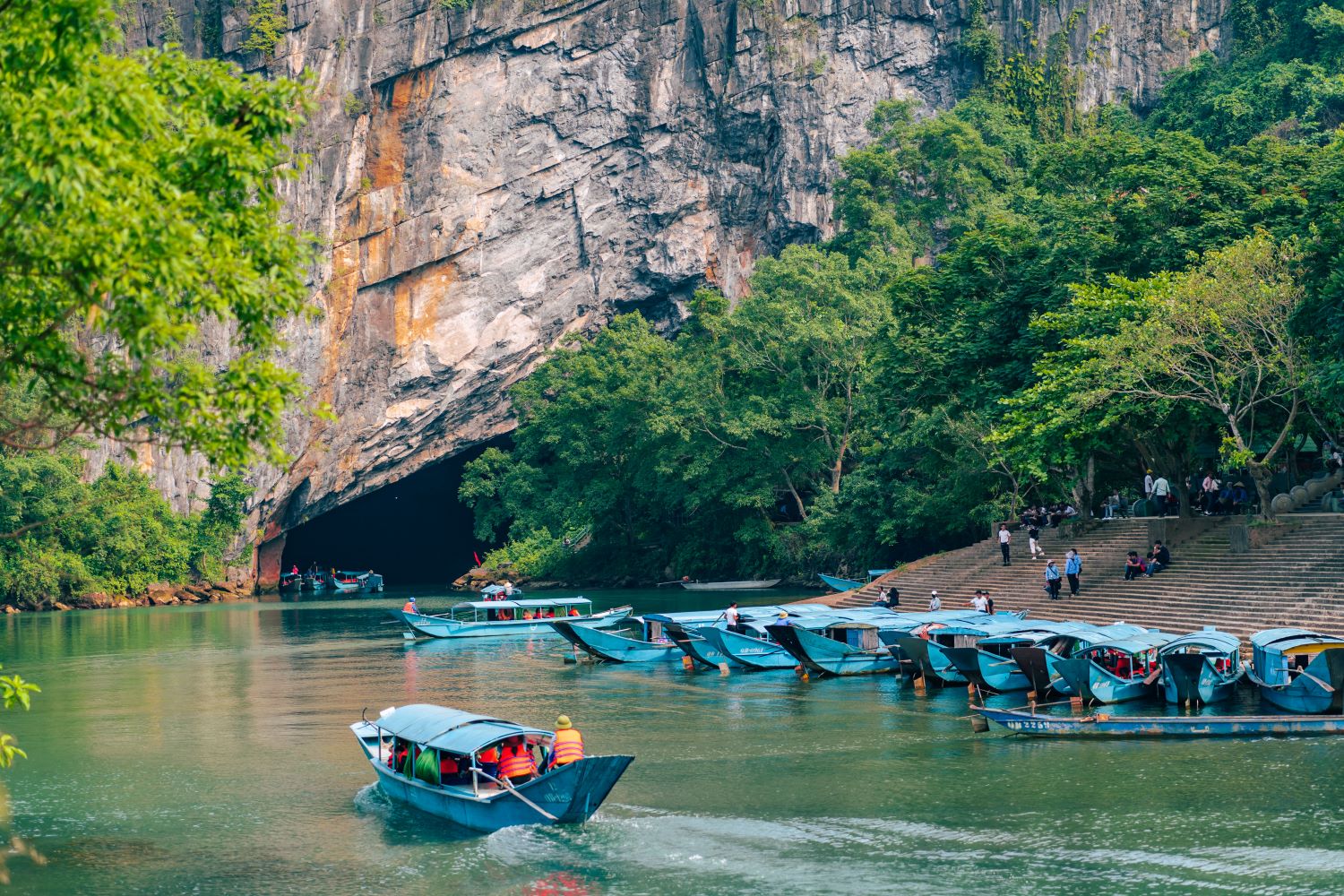
The exploration process of Phong Nha Cave
In 1935, a local resident accidentally discovered a dry cave located 1,000 meters away from the entrance of Phong Nha Cave, at an altitude of 200 meters. This cave, situated within the Ke Bang limestone massif in Son Trach Commune, Bo Trach District, lacks an underground river but features a breathtaking landscape comparable to that of Phong Nha Cave.
In 1937, the French Resident-Superior’s Tourism Office in Hue published a travel brochure about Quang Binh, which included information about Phong Nha Cave. This helped rank Phong Nha Cave second among tourist attractions in French Indochina. Before 1990, several cave expeditions were conducted by both Vietnamese and foreign scientists, but little information about the Phong Nha cave system was revealed.
In 1990, Hanoi University and the British Cave Research Association initiated a collaborative effort to conduct extensive exploration and research on the caves in this region. The first expedition, led by Howard Limbert, was carried out by a team of cave experts from the British Cave Research Association and the Department of Geology and Geomorphology at Hanoi University. This expedition completed studies of Vom Cave.
In 1992, a second expedition, comprising 12 British scientists and 6 professors from Hanoi University, explored and studied Phong Nha Cave and Vom Cave. They mapped 7,729 meters of Phong Nha Cave and 13,690 meters of Vom Cave and nearby caves. A third expedition in 1994, involving 11 British and 5 Vietnamese scientists from Hanoi University, continued research and exploration of the caves in the area.
These expeditions encountered numerous challenges and dangers, including sharp cave structures, narrow passages, sudden surges of underground rivers and streams, and oxygen-deficient areas. Nevertheless, their findings highlighted the scientific, historical, and cultural significance of the Phong Nha cave system. The research outcomes contributed to the protection and promotion of Phong Nha Cave’s value, serving as a foundation for tourism development, planning, and preparing the dossier submitted to UNESCO for World Heritage recognition.

Phong Nha-Ke Bang National Park: A UNESCO World Heritage Site
Phong Nha Cave is part of Phong Nha-Ke Bang National Park, which has been recognized twice as a UNESCO World Heritage Site. It was first recognized in 2003 for its geological and geomorphological features, and on July 3, 2015, it was recognized again for its biodiversity.
For its geological and geomorphological significance, Phong Nha-Ke Bang National Park is regarded as one of the largest and most important karst regions in the world. With a long geological history shaped by various tectonic and erosion processes, the area boasts a unique system of caves, underground rivers, and remarkable landforms.
Regarding biodiversity, Phong Nha-Ke Bang National Park features a diverse and rich ecosystem, including tropical forest flora and fauna, cave-dwelling species, and underground river ecosystems. It is home to numerous rare and endangered plant and animal species listed in both the Vietnam Red Data Book and the International Red List.
UNESCO’s recognition of Phong Nha-Ke Bang National Park as a World Heritage Site is a great honor for Vietnam. This acknowledgment provides an excellent opportunity to promote tourism potential while preserving the country’s natural heritage.
Geology and geomorphology of Phong Nha Cave
Phong Nha Cave is one of the most captivating tourist destinations in Vietnam. It spans a length of 7,729 meters, with an entrance 20-25 meters wide, 10 meters high, and 83 meters deep. As a classic example of a river cave, it features 12 main chambers interconnected with numerous smaller branches.
The geological and geomorphological formation of Phong Nha Cave is a long and intricate process that began approximately 400 million years ago during the Paleozoic Era. Over this period, the area experienced tectonic movements, geological activities, and the effects of external forces, shaping its unique and diverse landforms.
Continuous tectonic activities caused faults, fractures, and folds in the limestone mountains. These fractures allowed groundwater to seep through, dissolving the limestone and forming the caves. External forces, including flowing water and wind, further contributed to the cave’s development. Rainwater erosion and groundwater flow played critical roles in forming the karst landscape of Phong Nha-Ke Bang. Rainwater, containing a small amount of dissolved calcium carbonate (CaCO3), infiltrated cracks in the limestone under gravity. Underground streams continued to erode the limestone, forming caves, stalactites, and other features.
Phong Nha-Ke Bang is the result of five major geological development stages over Earth’s history. Each stage contributed uniquely to the area’s geological and geomorphological features:
- Late Ordovician – Early Silurian Period (450 million years ago)
- Mid to Late Devonian Period (around 340 million years ago)
- Carboniferous – Permian Period (300 million years ago)
- Orogenic Phase
- Cenozoic Era (250 – 65 million years ago)
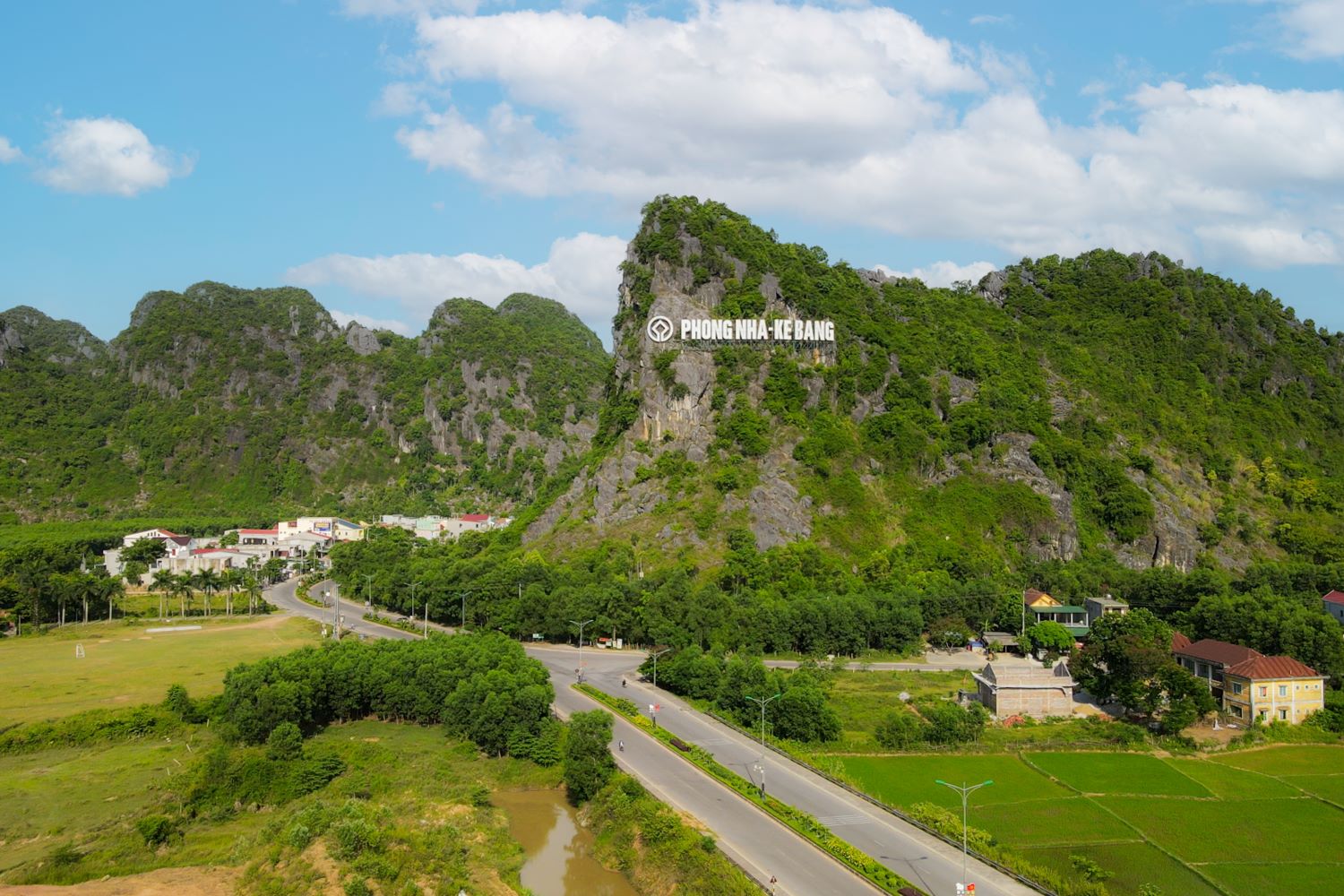
Highlights of Phong Nha Cave
Known as the “First Wonder Cave,” Phong Nha Cave has been recognized for its seven outstanding features, as assessed by experts from the British Cave Research Association:
- The longest cave system
- The largest and widest cave entrance
- The most beautiful underground lakes
- The most expansive and stunning dry caves
- The most magnificent and beautiful stalactites
- The longest underground river in Vietnam
- The widest and most beautiful sandbanks and rock formations
The beauty of Phong Nha Cave is an intrinsic part of Quang Binh’s natural charm. Words fail to capture the mesmerizing allure of the cave. Its stalactites come in countless shapes, resembling flowers, pearls, Buddha statues, or brocade. As visitors take a boat along the Son River, they are greeted by the sight of towering limestone mountains along the water’s edge. The cave’s entrance resembles a picturesque landscape painting, opening into a mystical world within.
As the boat ventures into the cave, visitors feel the cool air and a sense of awe, as though stepping into a sacred, mysterious place. From the boat, they can admire the shimmering beauty of countless stalactites in a variety of shapes. The stalactites hang down like enormous teeth, seemingly bracing against the strong winds blowing from the depths of the cave. Such breathtaking beauty is beyond description.
When visiting Phong Nha Cave, guests can explore its enchanting chambers illuminated by soft lighting, such as Co Tien Cave, Bi Ky Cave, and Cung Dinh Cave. These chambers boast stunning stalactite formations bestowed by nature. Among the remarkable creations of nature are the towering stalactites over 20 meters high in Cung Dinh Cave, two parallel stalactite columns resembling ropes connecting the ceiling and floor, and historical traces preserved in Bi Ky Cave.
Phong Nha Cave offers not only the marvels of natural beauty but also an opportunity to immerse oneself in the unique cultural heritage of Quang Binh, creating an unforgettable experience for visitors.
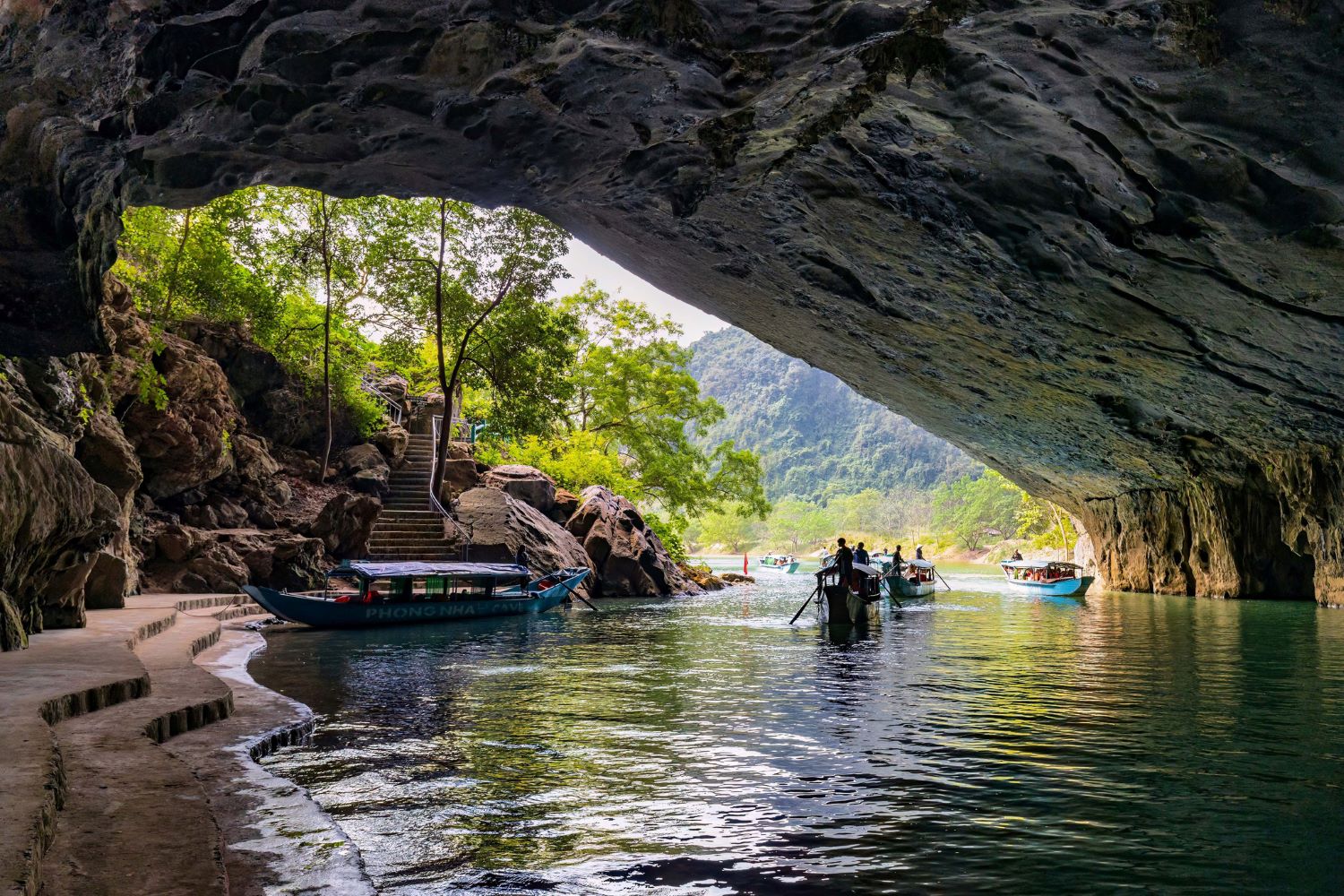
Tourism activities at Phong Nha Cave
Exploring the caves of Quang Binh is a fantastic way to discover Phong Nha Cave and its stunning surroundings. Visitors can enjoy an exciting experience aboard a boat, taking in the magnificent natural beauty of the ancient karst terrain, which has over 400 million years of history. Along the way, you’ll have the opportunity to observe the daily life of Phong Nha locals living along the Son River. After a 1.2 kilometers boat ride into Phong Nha Cave, you can walk freely to explore the limestone formations in various shapes and sizes.
Entrance fees:
- Adults and children 1.3 meters or taller: 150,000 VND/person/visit
- Children under 1.3 meters: Free admission
Please note that the boat transportation cost is 550,000 VND per round trip, accommodating up to 12 people, including children.
Tour guide services:
- Vietnamese-speaking guide: 200,000 VND/guide
- English-speaking guide: 300,000 VND/guide
Visitors can purchase tickets and book boat rides at the Phong Nha Tourism Center. Ticket sales are open from 7:30 AM to 4:00 PM, with multiple departure times available throughout the day.
How to get to Phong Nha Cave
Phong Nha Cave is located within Phong Nha-Ke Bang National Park, approximately 45 kilometers northwest of Đồng Hới City. Here are some transportation options to reach the cave:
Motorbike
This is the most flexible and cost-effective option. Motorbikes can be rented from hotels or guesthouses in Dong Hoi. From the city center, take QL16 to Phong Nha Town, then turn left onto DT20 to reach the cave. Travel time is approximately 1 hour.
Bus
There are bus routes from Dong Hoi to Phong Nha, with fares costing about 20,000 VND per trip. The bus will drop you off in the center of Phong Nha Town, from where you can hire a motorbike taxi or regular taxi to the cave. Travel time is approximately 1 hour 30 minutes.
From Dong Hoi Train Station
Walk to Tran Hung Dao Street to catch a taxi or motorbike taxi to the Dong Hoi bus station. From there, purchase a bus ticket to Phong Nha. The journey takes about 2 hours.
From Dong Hoi Airport
For faster travel, you can fly to Dong Hoi Airport. From the airport, take a taxi or bus to Dong Hoi city center, then continue to Phong Nha using one of the methods mentioned above. Total travel time is approximately 1 hour 30 minutes.
Notes when visiting Phong Nha Cave
- Timing your visit
Phong Nha Cave is located in a tropical monsoon climate with two distinct seasons: the rainy season from September to December and the dry season from January to August. The best time to visit Phong Nha Cave is during the dry season, as the weather is dry and favorable for sightseeing and transportation. However, visiting during the rainy season also offers unique experiences.
- Respect for local culture
Phong Nha-Ke Bang is home to ethnic minority communities with distinct customs and beliefs. Visitors are encouraged to respect local culture and avoid actions that could disrupt the lives of local residents.
- Nature conservation
Phong Nha-Ke Bang National Park is a UNESCO World Heritage Site that requires careful preservation. Visitors should avoid littering, breaking tree branches, capturing wildlife, or touching stalactites and other cave formations.
Nestled within the limestone mountains of Phong Nha-Ke Bang National Park, Phong Nha Cave is one of Vietnam’s most famous natural wonders. Its breathtaking beauty—marked by majestic stalactites, limestone columns, and crystal-clear underground rivers—has captivated millions of domestic and international visitors each year. The cave’s enchanting, otherworldly atmosphere leaves visitors amazed and overwhelmed.
Beyond being a renowned tourist destination, Phong Nha Cave is a world heritage treasure that must be preserved. Together, we can protect this invaluable gift of nature for future generations.
FAQs
Where is Phong Nha Cave located?
Phong Nha Cave is located in Phong Nha-Ke Bang National Park, in Son Trach Commune, Bo Trach District, Quang Binh Province, Vietnam. The park is situated in the northwestern part of Quang Binh, approximately 45 kilometers from Dong Hoi City.
Which cave in Phong Nha is the largest in Vietnam?
The largest cave in Phong Nha is Son Doong Cave, which is known as the “largest cave in the world.” Son Doong Cave is over 5 kilometers long, 200 meters high, and 150 meters wide. It was discovered in 2009 by a group of British explorers.
Why is Phong Nha Cave called a “World Natural Wonder”?
Phong Nha Cave is called a “World Natural Wonder” for holding seven unique titles:
- The longest cave system
- The largest and widest cave entrance
- The most beautiful underground lakes
- The most expansive and stunning dry caves
- The most magnificent and beautiful stalactites
- The longest underground river in Vietnam
- The widest and most beautiful sandbanks and rock formations
What scientific values does Phong Nha Cave hold?
Scientifically, Phong Nha Cave is one of the most beautiful and largest caves in the world. It has a diverse and rich system of stalactites and stalagmites, formed over millions of years. This makes it a valuable resource for scientists researching geology, geomorphology, zoology, and botany.
Where should I stay if I want to visit Phong Nha Cave?
Depending on your needs and budget, you can choose an appropriate place to stay. If you want to enjoy the beach at Nhat Le in the evening, taste seafood, and explore local specialties, Dong Hoi is a great option. However, if you are looking to save money, you can also stay near Phong Nha. Some options include Chay Lap Farmstay, Blue Diamond Retreat, or Commander Lodge. For more details, visit: https://oxalisadventure.com/phong-nha-accommodation-guide/
Is Phong Nha Cave suitable for children and the elderly?
Phong Nha Cave is a tourist destination suitable for all ages, including children and the elderly. The cave stretches about 7 kilometers, but only the first 1.2 kilometers is open to tourists. The difficulty level is moderate, with few high or narrow stairs, making it suitable for children and the elderly.
Should I buy tickets to Phong Nha Cave in advance, or can I purchase them on-site?
Visitors can buy tickets directly at the ticket counter at Phong Nha Tourism Center without needing to book in advance.
How do I get to Phong Nha Cave from Ho Chi Minh City?
To get to Phong Nha Cave from Ho Chi Minh City, you have three options:
- Take a flight from Tan Son Nhat Airport to Dong Hoi Airport.
- Take a train from Saigon Station to Dong Hoi Station, which takes about 26 hours. Afterward, you can take a taxi or a bus to the Phong Nha Tourism Center (50 kilometers away, approximately 1.5 hours by car).
- Take a direct bus from Saigon to Phong Nha, which takes about 30 hours.
How do I get to Phong Nha Cave from Hanoi?
There are three ways to get to Phong Nha from Hanoi:
- Take a sleeper bus directly to Phong Nha town center.
- Take a train to Dong Hoi Station, then rent a car, motorbike, or take a taxi to Phong Nha.
- Take a flight to Dong Hoi Airport, then rent a car, motorbike, or take a taxi to Phong Nha.
When is the best time of the year to visit Phong Nha Cave?
The best time to visit Phong Nha Cave is from January to August. This is the dry season, with favorable weather and little rain. The Son River’s water levels are low, allowing for boat tours inside the caves.
Do I need to hire a tour guide when visiting Phong Nha Cave?
Hiring a guide can help you better understand the history and geology of Phong Nha Cave, as well as ensure your safety during the tour. However, if you are confident in exploring on your own and have researched beforehand, you may not need a guide.
What environmental protection rules should I follow at Phong Nha Cave?
- Do not litter
- Do not climb on stalactites
- Do not touch or step on stalactites
- Do not break or remove stalactites from the cave
- Do not graffiti on stalactites
- Dress appropriately and respect local customs
Can I join cave tours to Phong Nha Cave without prior experience?
Yes, you can join a cave tour to Phong Nha without prior experience.
Can I visit Phong Nha Cave on my own, or should I join an organized tour?
You can choose to visit Phong Nha Cave independently or book a tour with a travel agency.
What is the ticket price for Phong Nha Cave?
The entrance fee for Phong Nha Cave is 150,000 VND for adults and 75,000 VND for children. The boat tour fee for visiting Phong Nha Cave is 550,000 VND per boat (including life jackets), with a maximum of 12 passengers, including children.
What transportation options are available for visiting Phong Nha Cave?
Once you arrive at Phong Nha Cave, you can participate in trekking tours and explore the caves by boat (via the Son River). Visitors from Hanoi and Ho Chi Minh City can use various transportation options such as trains, flights, or buses to reach Quang Binh. Afterward, take a taxi, tourist car, or motorbike to Bo Trach District for the Phong Nha Cave tour.
How many caves are there inside Phong Nha?
Phong Nha Cave has a surveyed length of nearly 8 kilometers, including 12 main caves and many smaller branches. Each cave has its own unique and stunning characteristics, contributing to the diversity of the cave system.
When was Phong Nha Cave recognized as a UNESCO World Heritage Site?
Phong Nha-Ke Bang was recognized as a UNESCO World Natural Heritage site for its geological and geomorphological value in 2003. On July 3, 2015, it was recognized for the second time by UNESCO for its biodiversity.
What is the significance of Phong Nha Cave for Vietnam?
Phong Nha Cave is part of Phong Nha-Ke Bang National Park, which was recognized by UNESCO as a World Natural Heritage site. This recognition not only affirms the global significance of Phong Nha Cave but also elevates Vietnam’s standing on the world heritage map. With its magnificent and pristine beauty, Phong Nha Cave attracts millions of visitors each year, contributing significantly to Vietnam’s tourism industry and generating substantial revenue for the national economy.




